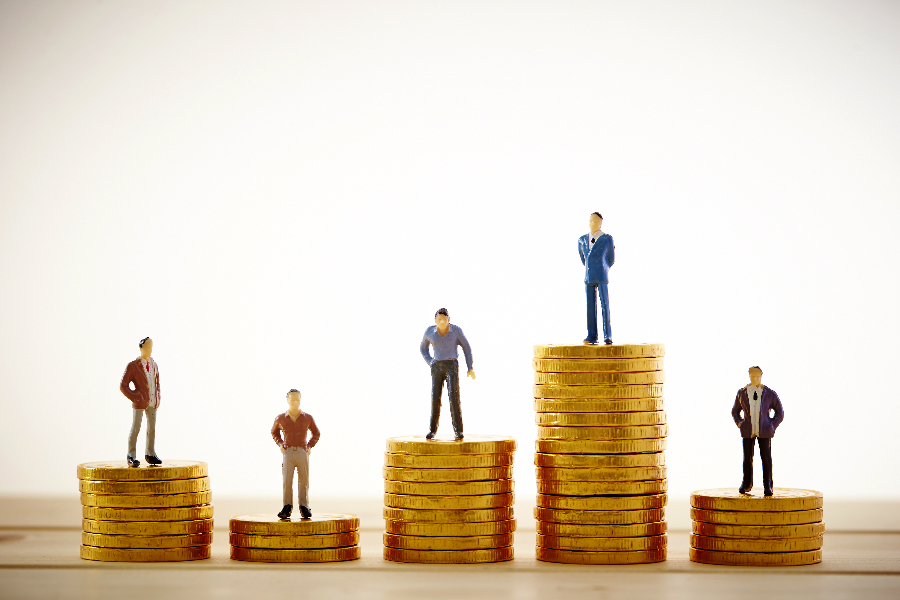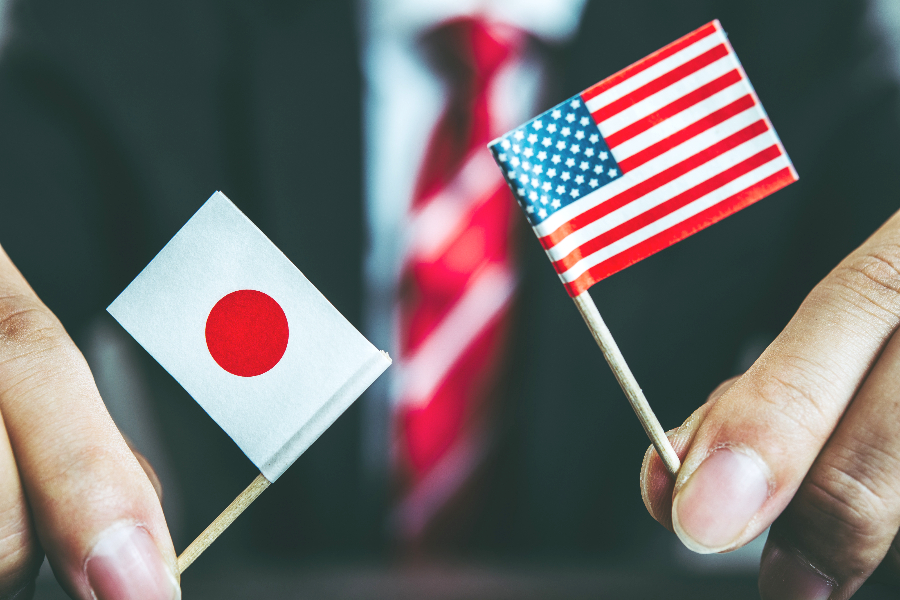Companies that expand overseas often fall into the illusion that what is accepted in Japan is accepted in other countries. Different businesses and economies require different products. This time, we have summarized the characteristics of the U.S. economy and social structure.
目次
Japan and the United States as a percentage of GDP
In the world economy, the winners are chosen rather than all the participants rushing to the top to decide the ranking. In other words, the winner and the rest are clearly separated. Let’s compare Japan and the United States in terms of nominal GDP.
In 1995, the size of the Japanese economy was about 70% of that of the United States, but in 2017 the difference was about 1/4. Of course, America has a large land area and a larger population than Japan.
How does GDP per capita compare? In terms of per capita GDP, Japan surpassed the U.S. in 1995, but in recent years it has been around 2/3 of the U.S. According to the per capita GDP published by the International Monetary Fund (IMF) in 2019, Japan ranked 26th, which is lower than Germany, Britain and other countries.
These differences may also be due to monetary policy. The monetary policy of the central government not only increases the rate of economic growth but also aims to prevent unemployment. Japan’s economic policy is characterized by the active use of fiscal and monetary policies.
In Japan, if the economy is expanding, fiscal spending will be curbed and inflation will be restrained by tightening. Conversely, when the economy is in a recession, they try to stimulate the economy by increasing fiscal spending, reducing taxes and tightening credit. By implementing economic policies that are contrary to the economy, employment and people’s lives are stabilized.
This kind of economic policy cannot always be implemented at the best time. On the contrary, it may accelerate the economic fluctuation. However, some government intervention is needed to curb unemployment and achieve moderate growth.
Characteristics of the Recovery from the Lehman Shock
The Lehman Shock in 2008 was one of the reasons that the government’s intervention in the economy was considered indispensable. However, after the Lehman shock, the U.S. economy is recovering faster than other countries. On the other hand, the slump in Japan and Europe was prolonged due to the impact of the Lehman shock.
When the Lehman Shock occurred in 2008, the real economic growth rate in the United States fell to -0.1%, and in 2009 it expanded to -2.5%. In Japan, on the other hand, it was -1.1% in 2008 and -5.4% in 2009. It looks like the wound is deeper in Japan.
However, the unemployment rate in the United States rose to nearly 10%, while in Japan it rose to the 5% level between 2009 and 2010. This shows the characteristics of each economic policy.
economic disparity in the United States, where the wealthy have increased

After the Lehman shock, the U.S. economy continued to expand moderately. The expansion has created many wealthy people and is said to have more than doubled the number of billionaires with assets of more than $1 billion in the United States.
Federal Reserve (FRB) data for 2016 also showed that 88% of wealth in the United States is concentrated in the richest 20%. This ratio was larger than before the Lehman shock. In America, there is a system called food stamp where you can get free meals. The number of people currently receiving food stamps is 39 million, an increase of about 40% from 2008.
After the collapse of Lehman Brothers, many people did not expect the United States to achieve such a rapid recovery. However, the market has stabilized and asset prices have been pushed back to their previous levels. On the other hand, the government is said to have left behind problems such as income disparities and changes in wealth.
Economically speaking, prices are rising steadily in the United States, where the economic boom continues. The poor and unemployed suffered from rising rents and prices. The income gap, which is a characteristic of the U.S. economy, is emphasized even more in recession. If the economy stagnates at a time when interest rates fall or tax cuts become less effective, low-income households will be the first to suffer.
An increase in unemployment and poverty not only reduces consumption but also increases social unrest. In order to prevent this from happening, early efforts to correct disparities are required.
Summary
In the United States, exports to China have continued to decline and exports to the EU and Latin America have also declined. This indicates a slowdown in external demand due to uncertainty over the global economy. In order to ensure the domestic demand that supports the United States, it is necessary to correct disparities in society. The United States has developed its economy through consumption. The future of the United States and its economy will depend on how strong domestic demand can be.



